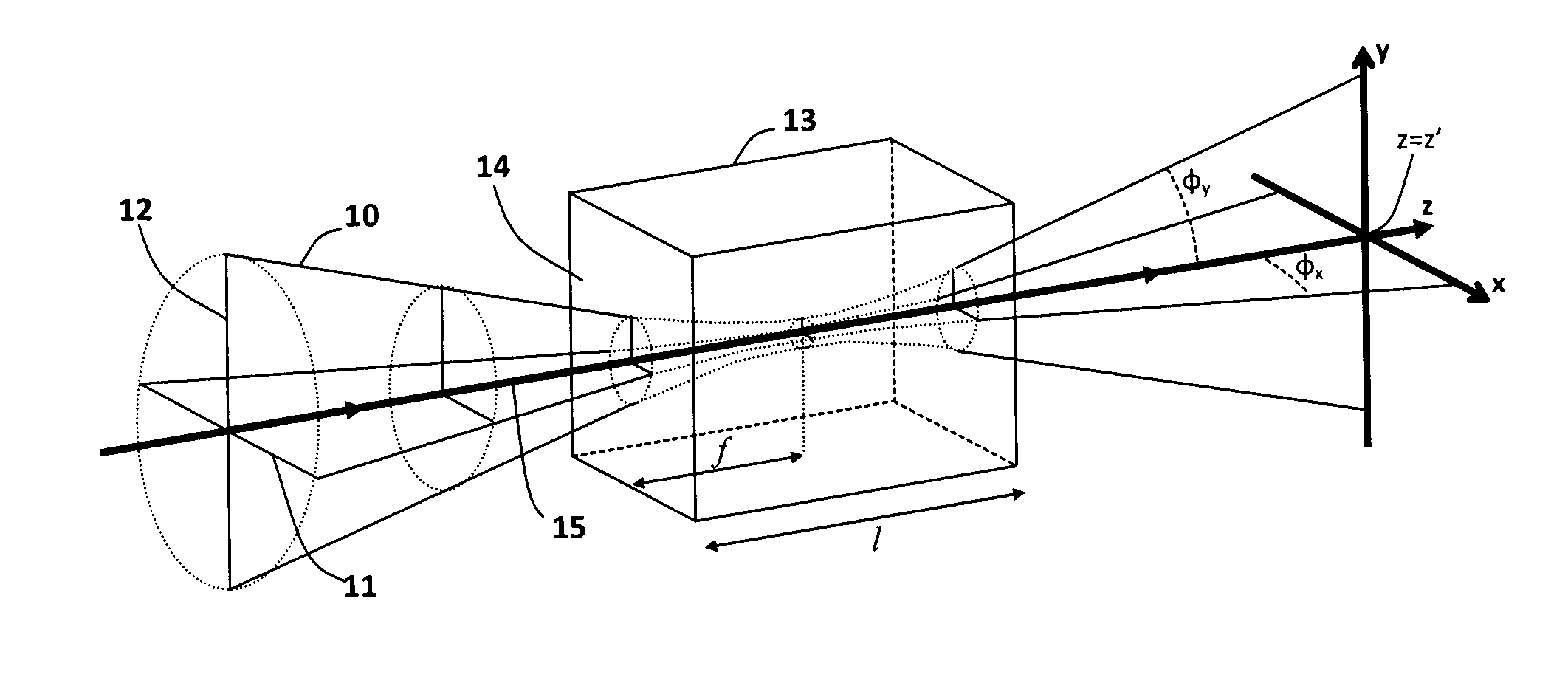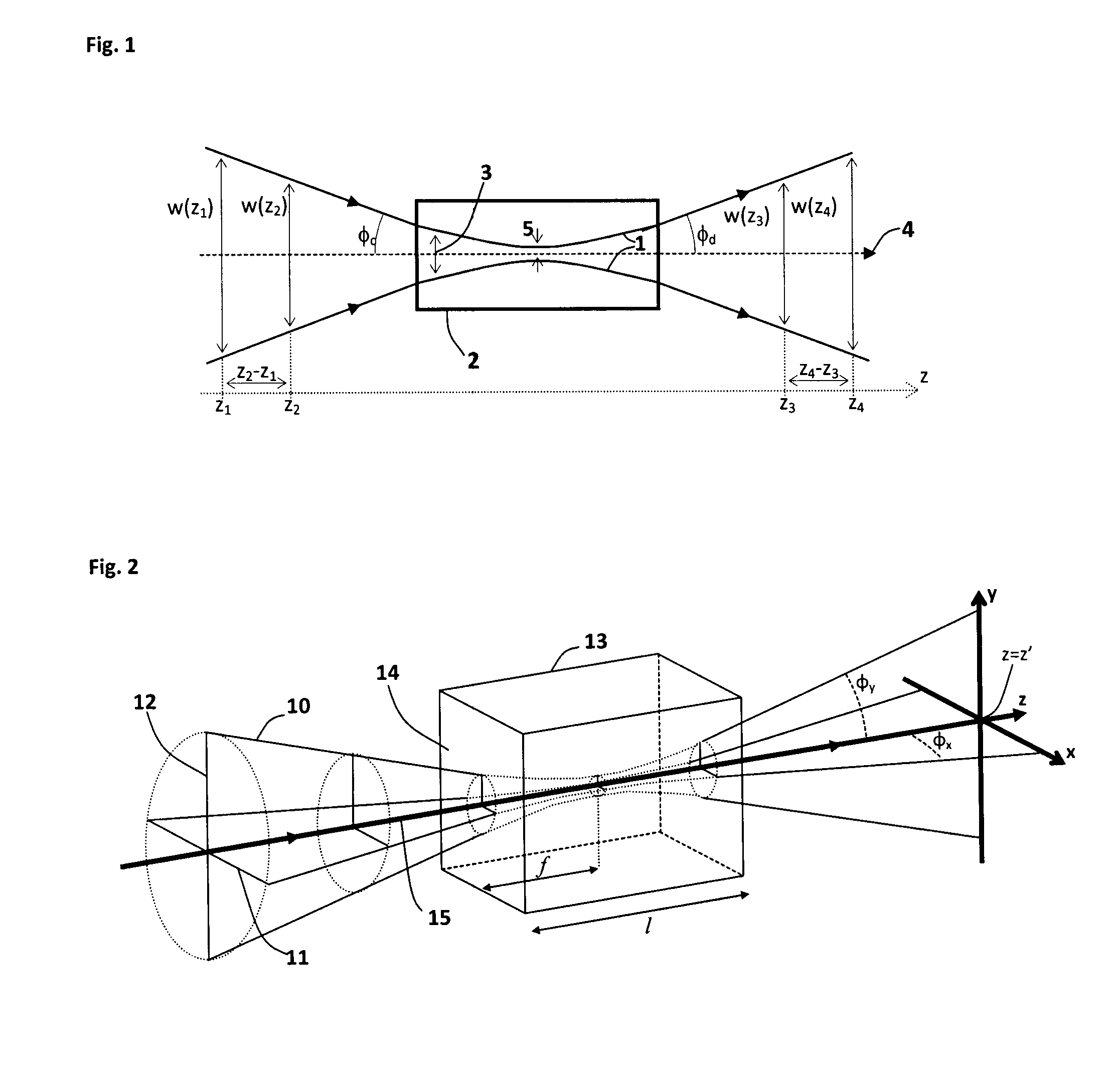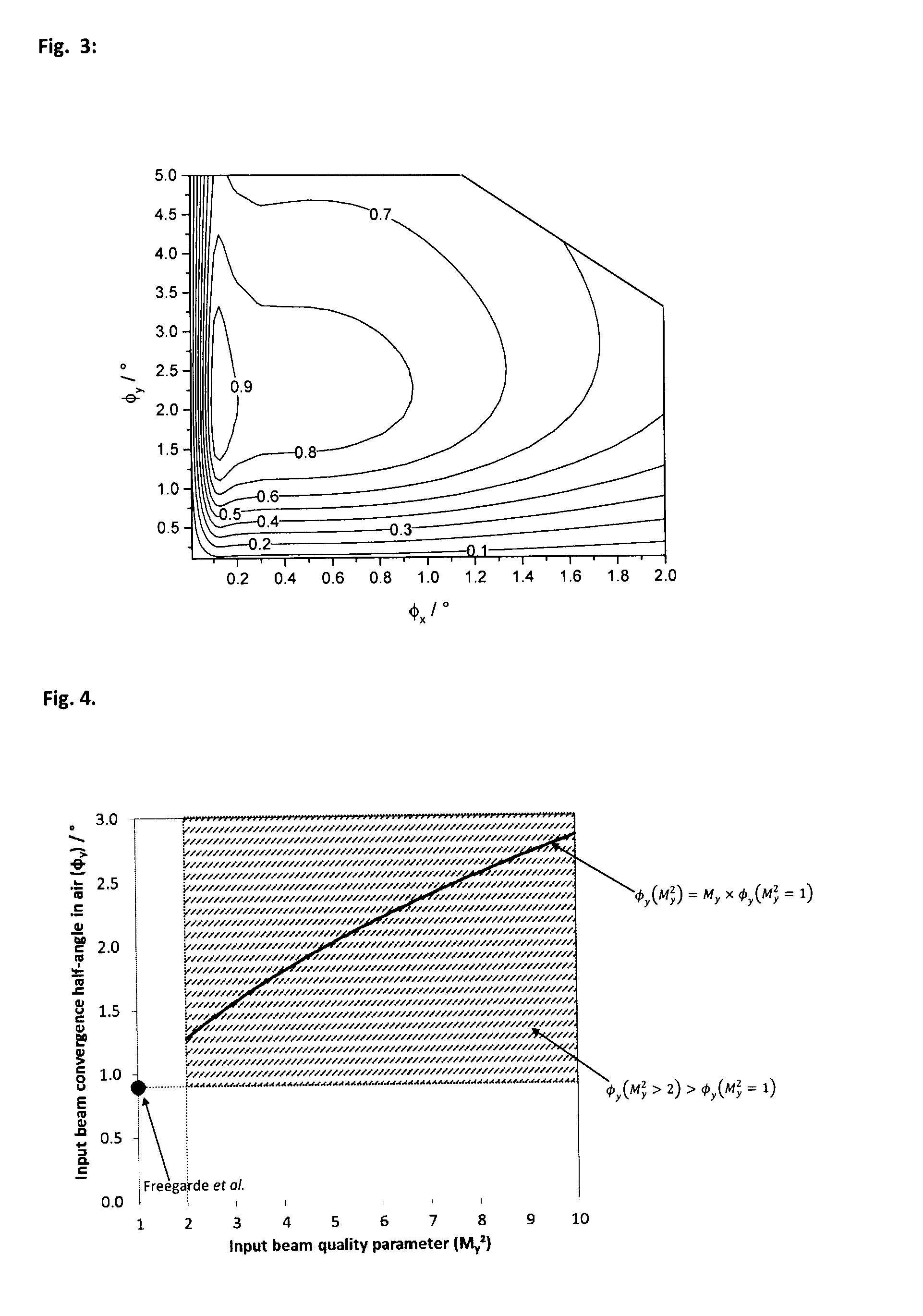Frequency-converted light source
- Summary
- Abstract
- Description
- Claims
- Application Information
AI Technical Summary
Benefits of technology
Problems solved by technology
Method used
Image
Examples
example 1
[0117]A first example is a device for generation of ultraviolet light which has significant advantages over conventional devices in the prior art. The device includes a laser diode which emits non-diffraction-limited light, and this light undergoes SHG in an NLFC component resulting in a generated beam with wavelength shorter than 300 nm.
[0118]A schematic diagram of an exemplary laser device is shown in FIG. 6. The x-axis, y-axis and z-axis are defined in FIG. 6, and all references to these axes in the following description of this first example refer to this definition. The x-axis and z-axis are in the plane of the diagram in FIG. 6 and the y-axis is perpendicular to the plane of the diagram. A light source 20 includes a light emitting element such as a laser diode 21, an aspheric lens 22, a dichroic component 23, a first cylindrical lens 24, a second cylindrical lens 25, an NLFC component 26, a first filter 27, a spherical lens 28 and a second filter 29.
[0119]The laser diode emits...
example 2
[0148]A second example of this invention is now described. This second example is similar to the first example and common features will not be repeated. In this second example of the invention, the NLFC component 26 includes a β-BaB2O4 crystal which has a length, measured along the propagation direction of the input beam 33, of 15 mm. The orientation of the β-BaB2O4 crystal is the same as for the first example. The source beam 32 has the same properties as for the first example, for example a wavelength in air of approximately 445 nm and beam quality factors of Mx2=4.0 and My2=6.0 in the first and second planes of the beam respectively.
[0149]The suitable convergence half-angle in air of the input beam in the second plane of the beam (φy) to achieve high SHG efficiency is determined according to an aspect of the current invention; namely that φy(My2>2)>φy(My2=1). The suitable convergence half-angle in air for a diffraction-limited beam (My2=1) may be determined according to the metho...
example 3
[0152]A third example of the invention is now described. This third example is similar to the first example and common features will not be repeated. In this third example of the invention, the light emitted by the laser diode has a wavelength in air of approximately 416 nm. The beam quality factors of the source beam 32 are Mx2=5.0 and My2=8.0.
[0153]The NLFC component 26 includes a β-BaB2O4 crystal with the same orientation as for the first example, except that θ≈79.3° to provide Type 1 phase matching for a input beam with wavelength in air of 416 nm. For this example, when θ≈79.3°, the walkoff angle (ρ) of the generated beam is ρ≈2°.
[0154]The suitable convergence half-angle in air of the input beam in the second plane of the beam (φy) to achieve high SHG efficiency is determined according to an aspect of the current invention; namely that φy(My2>2)>φy(My2=1). The suitable convergence half-angle in air for a diffraction-limited beam (My2=1) may be determined according to the method...
PUM
 Login to View More
Login to View More Abstract
Description
Claims
Application Information
 Login to View More
Login to View More - R&D
- Intellectual Property
- Life Sciences
- Materials
- Tech Scout
- Unparalleled Data Quality
- Higher Quality Content
- 60% Fewer Hallucinations
Browse by: Latest US Patents, China's latest patents, Technical Efficacy Thesaurus, Application Domain, Technology Topic, Popular Technical Reports.
© 2025 PatSnap. All rights reserved.Legal|Privacy policy|Modern Slavery Act Transparency Statement|Sitemap|About US| Contact US: help@patsnap.com



